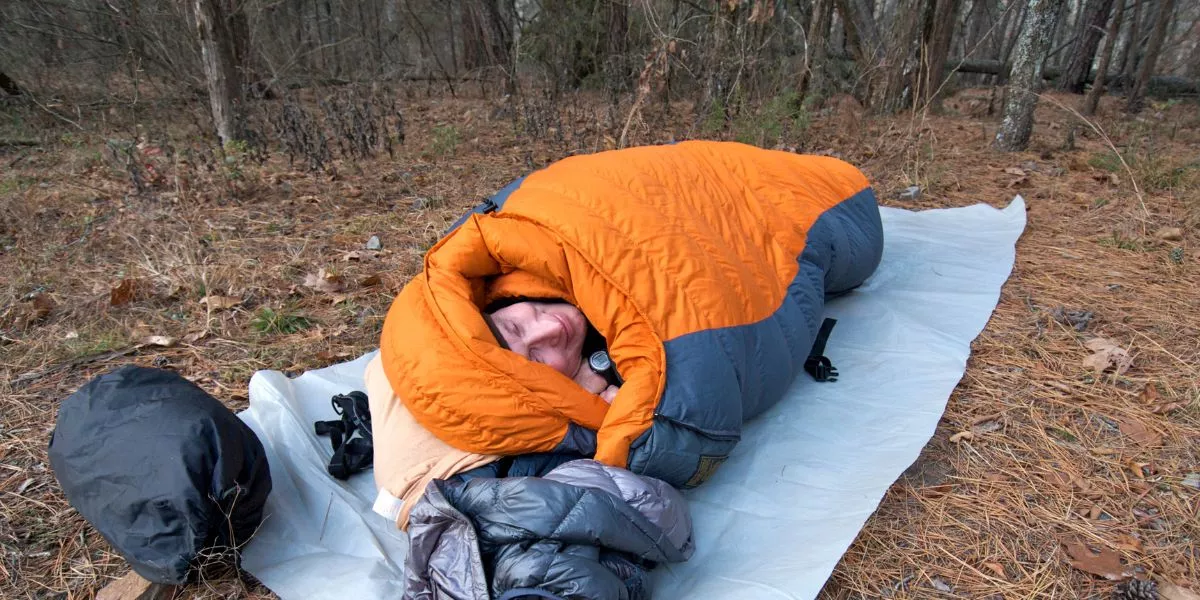
When planning your outdoor trips, ensuring a good night's sleep is essential. The right sleeping bag can make all the difference, but with the variety available, choosing the best one can be a challenge. Understanding the differences between sleeping bags designed for various weather conditions is crucial for your comfort and safety. From frosty winter nights to balmy summer evenings, each season demands a specific set of features to guarantee a restful slumber. So, how do you navigate this vast array of choices to find the perfect sleeping bag for your next adventure?
Warmth for Cold Nights
When camping in cold nights, make sure to choose a sleeping bag rated for temperatures below what you expect to encounter. This is crucial for staying warm and comfortable throughout the night. Look for sleeping bags with insulation that can handle the coldest temperatures you anticipate facing. Down-filled sleeping bags are excellent for providing insulation in frigid conditions, while synthetic materials offer good warmth even when wet.
Consider the temperature rating of the sleeping bag to ensure it matches the expected weather. A lower temperature rating means the bag is designed to keep you warm in colder conditions. Additionally, features like draft collars, hood cinches, and draft tubes along zippers help trap heat inside the sleeping bag and prevent cold air from seeping in.
Opt for a mummy-shaped sleeping bag for better heat retention as it hugs your body closely, minimizing the air pockets where cold air can linger. Remember to wear thermal layers and a hat to further enhance warmth on those chilly camping nights.
Light and Breathable for Summer
For summer camping, prioritize sleeping bags that are light and breathable to ensure comfort in warmer weather conditions. Look for sleeping bags made from lightweight materials like nylon or polyester to keep you cool during hot summer nights. These materials aren't only breathable but also quick-drying, which is essential for staying comfortable in the heat.
Opt for sleeping bags with features like ventilation options, such as zippered openings or mesh panels, to increase airflow and prevent overheating. A mummy-style bag with a hood can provide insulation without sacrificing breathability. Consider a bag with a temperature rating suitable for summer nights, typically around 30°F to 50°F, to ensure you stay cozy without getting too warm.
Additionally, choose a sleeping bag that's easy to pack and carry, as you might be moving around more during the summer months. Look for compressible bags that won't weigh you down or take up too much space in your backpack. Prioritizing a light and breathable sleeping bag will help you get a good night's sleep and fully enjoy your summer camping adventures.
Versatile for Changing Weather
Stay prepared for varying weather conditions with a sleeping bag that offers versatility in insulation and temperature regulation. Opt for a sleeping bag that features adjustable ventilation options, such as zippered vents or removable layers, allowing you to easily adapt to changing temperatures throughout the night. Look for a bag with a temperature rating that covers a wide range, so you can stay comfortable in both warm and cool conditions.
Some sleeping bags come with innovative materials that wick away moisture when it's hot but provide extra warmth when temperatures drop, ensuring you stay cozy regardless of the weather.
Additionally, consider a sleeping bag that offers flexible sizing options, like adjustable hoods and foot boxes, so you can customize the fit based on the weather and your personal preferences. This adaptability allows you to stay comfortable and well-rested no matter what the weather brings.
Waterproof for Rainy Conditions
Ensure your sleeping bag is equipped to handle rainy conditions by choosing a waterproof design that shields you from moisture. When camping or hiking in wet weather, a waterproof sleeping bag is essential to keep you dry and comfortable throughout the night. Look for sleeping bags with water-resistant materials such as ripstop nylon or polyester with a durable water repellent (DWR) finish. These fabrics will prevent water from seeping into your bag, keeping you warm and dry even in heavy rain.
Additionally, consider sleeping bags with taped seams and waterproof zippers to provide extra protection against moisture. Taped seams prevent water from leaking through the stitching, while waterproof zippers ensure that no water can enter through the closure. It's also beneficial to choose a sleeping bag with a hood to keep your head dry and warm during rainy nights.
Investing in a high-quality waterproof sleeping bag won't only enhance your camping experience in rainy conditions but also provide peace of mind knowing that you're well-prepared for any weather challenges.
Compact for Backpacking Ease
When considering sleeping bags for backpacking ease, prioritize compact designs that allow for easy transport and minimal storage space. Look for sleeping bags that can be compressed into a small stuff sack, making them convenient to carry in your backpack without taking up too much room.
Opt for lightweight materials that don't add unnecessary bulk, ensuring you can move freely and comfortably during your outdoor adventures. A compact sleeping bag not only saves space but also reduces the overall weight you need to carry, which is crucial when every ounce counts on long hikes.
Consider sleeping bags with streamlined shapes and efficient insulation to maximize warmth while keeping the packed size to a minimum. By choosing a compact sleeping bag designed specifically for backpacking, you can enjoy a restful night's sleep without sacrificing valuable space or adding extra weight to your load.
Prioritizing compactness will make your backpacking trips more enjoyable and hassle-free.




